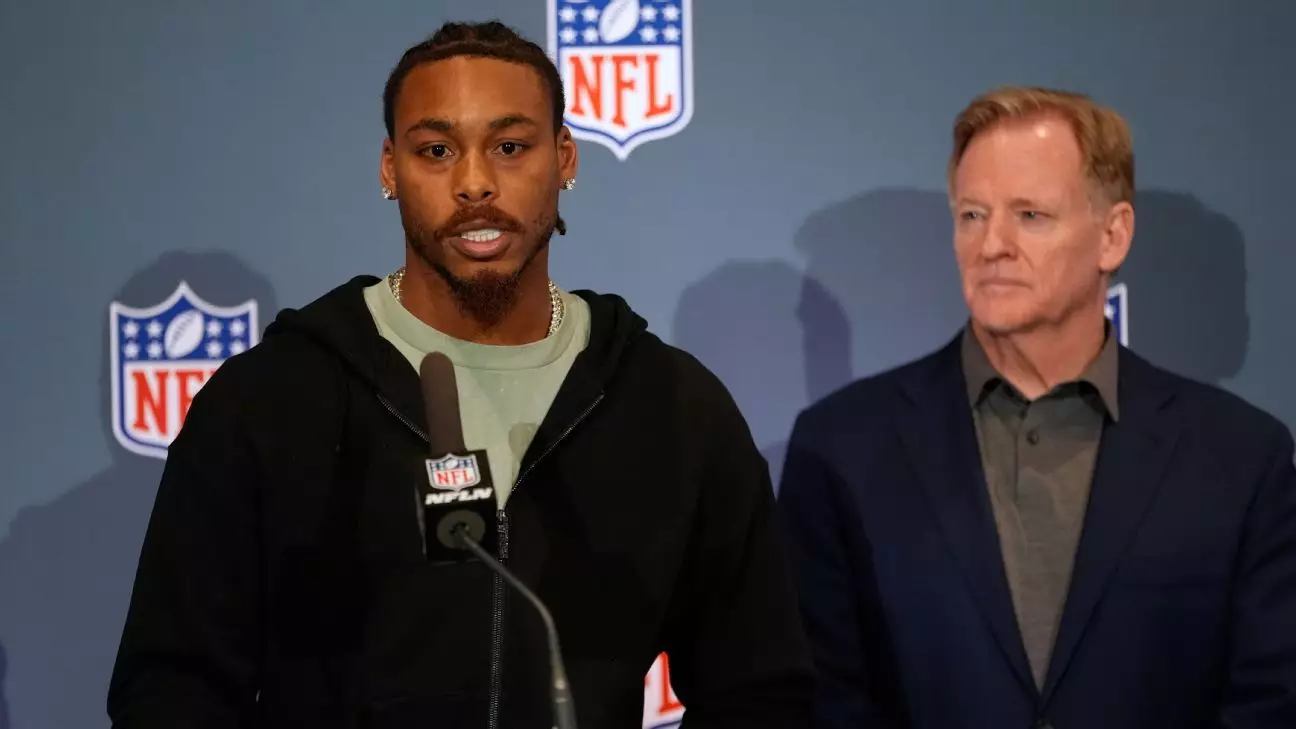The National Football League (NFL) is embarking on an unprecedented journey as it unanimously approved a proposal that allows its players to participate in flag football at the 2028 Los Angeles Olympics. This decision was greeted with exuberance, particularly by Minnesota Vikings’ superstar wide receiver Justin Jefferson, who illustrated his thrill through a jubilant “Olympic Griddy” dance during a press conference. The notion of seeing NFL athletes in the Olympics is not merely an expansion of gameplay; it signifies a powerful evolution in the global recognition of American football. Jefferson’s infectious enthusiasm made it clear that the road to the Olympics is a dream come true, not only for him but also for many young athletes who aspire to represent their country on the world stage.
Expanding the Football Frontier
The endorsement of flag football at the Olympics serves a dual purpose. It not only allows American football to reach an international audience but also enables its athletes to shine in front of the world. NFL executive Troy Vincent expressed excitement about this initiative, suggesting that this is a chance for the best athletes to demonstrate their prowess globally, reminiscent of the legendary Dream Team of 1992. The opportunity for players to showcase their talent in a sport traditionally deemed less global is a significant milestone that might inspire a generation of young footballers worldwide.
As fans of various sports gather to witness the Olympics, seeing NFL stars swap their helmets for flags will add a fascinating dimension to the games. Although players like Jefferson are thrilled about the prospect, the transition to flag football also demands recognition of the unique skill set required. While Jefferson and his peers boast impeccable athleticism suited for traditional football, flag football demands a different type of agility and finesse that seasoned players will need to adapt to.
The Reality of Preparation and Commitment
However, while excitement is palpable, the commitments remain daunting. Jefferson himself expressed some uncertainty about cementing his spot on the Olympic squad, echoing the thoughts of many athletes who must navigate their NFL careers and Olympic aspirations concurrently. Balancing the demands of two competitive spheres could present a significant challenge. It’s vital for players to contemplate their bodies, their training regimens, and the cumulative toll on their performance over three demanding seasons leading up to the Games.
The NFL’s timeline for preparing its players is a crucial factor in making this initiative fly. Conversations among NFL executives reveal a commitment to ensuring that the ramp-up to the Olympics is seamless and aligns with the NFL calendar. There’s an understanding that players must have adequate time to train for flag football while preparing for the grueling demands of the regular NFL season.
Challenges and Opportunities Ahead
One cannot ignore the various obstacles that players may face as they look toward competing for their countries. Negotiations with the NFL Players Association, Olympic committees, and governing bodies will be vital to clearly define terms, insurances, and player protections. The essence of participation isn’t just about showcasing talent; it’s also about ensuring that athletes feel secure in their choices.
Additionally, some players might have the option to represent their countries through familial ties or heritage, which could lead to negotiations about eligibility and representation on international platforms. As emerging global stars in flag football begin to carve out their own identities, respect towards those who have trained rigorously in this specialized sport remains critical.
Vikings linebacker Brian Asamoah II, another Global Flag Ambassador, acknowledges the unique skills required for flag football, emphasizing that speed and elusiveness take precedence over mere football prowess. This not only highlights the diversity of athletic abilities but also brings forward a deeper appreciation for the sport’s evolution.
The Future: Pioneering Flag Football’s Growth
As the NFL edges closer to the Olympic stage, the very landscape of American football is poised for transformation. The growth of flag football offers an exciting opportunity for new talents to emerge while simultaneously invigorating long-time fans of the game. Every earnest attempt to broaden the player base while respecting the skill sets of those already versed in flag football is essential for its sustainable growth.
The path ahead is filled with obstacles, yet there’s an undeniable sense of optimism about how this initiative will create waves in both the NFL and global sports communities. In this swift climate of change and opportunity, the NFL’s decision might very well signify a new epoch for football—one marked by inclusivity, diversity, and the sheer joy of competition on the grandest stage of them all.

